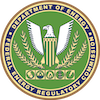Commission's Responsibilities
In 1920, Congress passed the Federal Water Power Act, which gave the Federal Power Commission (FPC), the Commission’s predecessor, its original authority to license and regulate non-federal hydropower projects. As Congress expanded the regulatory authority of the FPC, the Federal Water Power Act ultimately became Part I of the Federal Power Act (FPA). Part I of the FPA has been amended by subsequent statutes including the Electric Consumers Protection Act of 1986, the Energy Policy Act of 1992, the Hydropower Regulatory Efficiency Act of 2013, and the America’s Water Infrastructure Act of 2018. The Commission relies on these authorities to carry out its hydropower responsibilities, including: the issuance of preliminary permits; determinations regarding qualifying conduit facilities; the issuance of licenses for the construction and operation of new projects; the issuance of relicenses for existing projects; the investigation and assessment of headwater benefits; and the oversight of all ongoing project operations, including dam safety and security inspections, public safety, and environmental monitoring. While the Commission’s responsibility under the FPA is to strike an appropriate balance among the many competing developmental and non-developmental (including environmental) interests, several other statutes affect hydropower regulation. These include, but are not limited to, NEPA, the Clean Water Act, the Coastal Zone Management Act, the Endangered Species Act, the Fish and Wildlife Coordination Act, and the National Historic Preservation Act.
This hydropower primer provides an overview of the Federal Energy Regulatory Commission’s role in regulating and overseeing non-federal hydropower generation in the United States. It provides a history of hydropower and describes the role hydropower plays in the nation’s energy mix. The primer explains the different types of hydropower projects and the resources they affect. Further, it discusses the regulations and statutes applicable to the hydropower program. The primer describes the role of the Office of Energy Projects and its three divisions that work together to review hydropower project applications through the various licensing processes, oversee compliance and administration, and ensure dam safety. Finally, it provides an overview of how the public and agencies can interact with the Commission and the outreach opportunities provided by Commission staff.
Office of Energy Projects Inspections Guidelines
The Commission’s Hydropower Program is divided into three major components.
